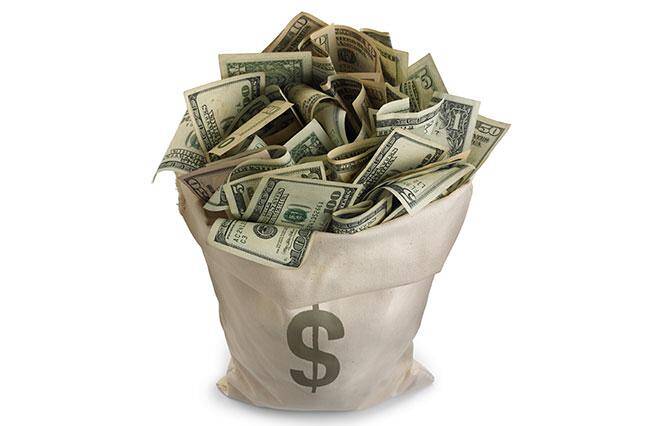Advertisement
Advertisement
U.S. Dollar Stabilizes after Volatile Week on Upbeat Labor Data
By:
Last week’s volatile price action centered on one market, the U.S. Dollar, and on one event, whether the Fed was going to raise interest rates in 2016.
Last week’s volatile price action centered on one market, the U.S. Dollar, and on one event, whether the Fed was going to raise interest rates in 2016.
The U.S. Dollar started the week under pressure despite the strong close on January 29 that was caused by the surprise news that the Bank of Japan was moving into a negative interest rate environment. The early weakness was fueled by worries about the timing of future rate hikes by the Fed in 2016. When the Fed raised rates for the first time in nine years on December 16, 2015, traders interpreted its monetary policy statement to suggest the possibility of at least four rate hikes in 2016.
On January 27, as widely expected, the U.S. Federal Reserve left rates unchanged. In its monetary policy statement, the central bank said it is “closely monitoring global economic and financial developments and is assessing their implications for the labor market and inflation, and for the balance of risks to the outlook.”
Although the statement was less-dovish than investors expected, it made them nervous because the Fed mentioned that it would be eying the financial markets and international developments. The move by the BoJ made investors even jitterier because it suggested that investors were facing tough markets ahead.
The general nervousness carried over to the markets at the start of the week, driving the dollar lower, but the selling increased on February 3 when the U.S. ISM Non-Manufacturing PMI data missed the estimate. The report showed a reading of 53.5 versus an estimate of 55.1. It also meant that the U.S. services sector expanded in January at its slowest pace since 2014.
The miss by the ISM Non-Manufacturing PMI data had a domino effect on the financial markets. U.S. Treasury yields began to tumble with the U.S. 10-Year Yield briefly falling below 1.8 percent at 1.793, near a 1-year low. Fed funds traders reacted to the news by pricing in a less than 30 percent chance of even one rate hike in 2016.
The forecasting tool showed that the financial markets were now assigning no higher than a 28 percent chance at any meeting this year, and just a 31 percent chance of a rate hike at 2017’s first meeting.
The result of the steep drop in Treasury yields was a sharp plunge in the U.S. Dollar. The Greenback suffered its worst day in seven years. Compounding the problem were comments from New York Fed President William C. Dudley, who said in an interview with Market News International, that policy makers are “acknowledging that things have happened in the financial markets and in the flow of the economic data that may be in the process of altering the outlook for growth and the risk to the outlook for growth going forward”.
The steep drop in the U.S. Dollar drove all the major currencies higher, including the Euro which eventually reached its highest level since October 22. The GBP/USD nearly erased all of its 2016 losses. The USD/JPY gave back all of its gains and then some from the surprise BoJ negative interest rate announcement from the week before. The Canadian Dollar reached levels not seen since mid-December and the Australian Dollar soared to nearly .7250, an area that may have made the Reserve Bank policymakers a little nervous.
If we flash-forward to Friday, February 5, we get a completely different picture than the gloomy outlook highlighted by the price action of the previous two days. This is because the U.S. Dollar rebounded against a basket of major currencies after data showed a pickup in U.S. wages in January, suggesting greater inflation and diminishing the view that the Federal Reserve would not hike rates at all this year.
According to the U.S. Labor Department, average hourly earnings increased 12 cents, or 0.5 percent, last month, leaving the year-on-year gain in earnings at 2.5 percent. This was 0.5 percent higher than the 2.0 percent inflation figure the Fed was hoping for.
The strong wage data was enough to drive the dollar higher even as the headline non-farm payrolls increased by just 151,000 jobs last month, below the 193,000 that economists were expecting. The unemployment rate also fell to 4.9 percent, the lowest since February 2008.
So while the dollar plummeted earlier in the week on the view that weak domestic economic data and worries over the global economy could prevent the Fed from hiking rates this year, and dovish comments from the Fed’s Dudley, it closed the week on the notion that maybe there will be at least one rate hike after all if we see more stabilization and improvement in the domestic and global economies.
About the Author
James Hyerczykauthor
James is a Florida-based technical analyst, market researcher, educator and trader with 35+ years of experience. He is an expert in the area of patterns, price and time analysis as it applies to futures, Forex, and stocks.
Did you find this article useful?
Latest news and analysis
Advertisement
